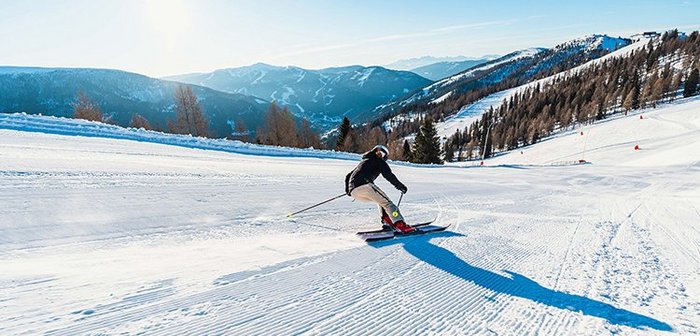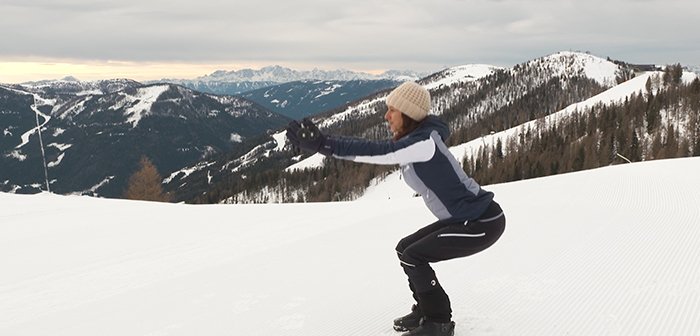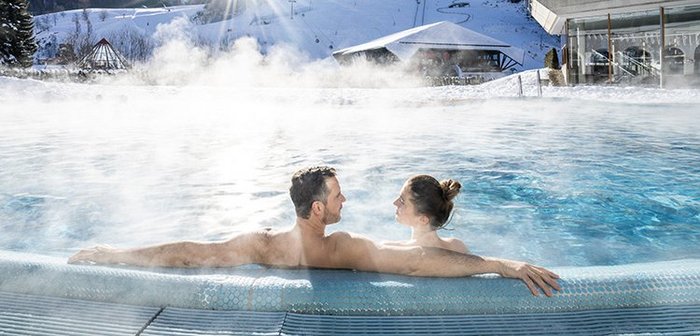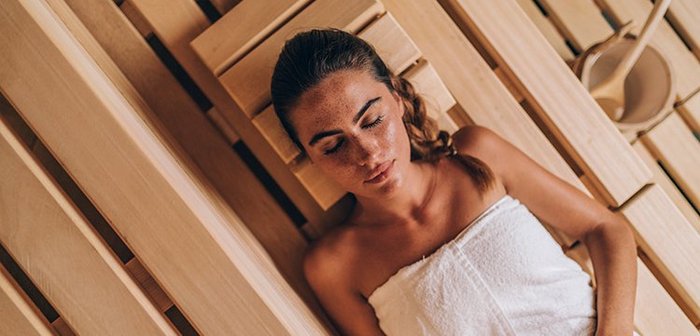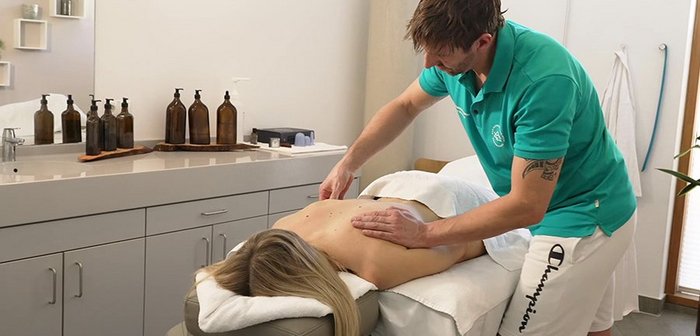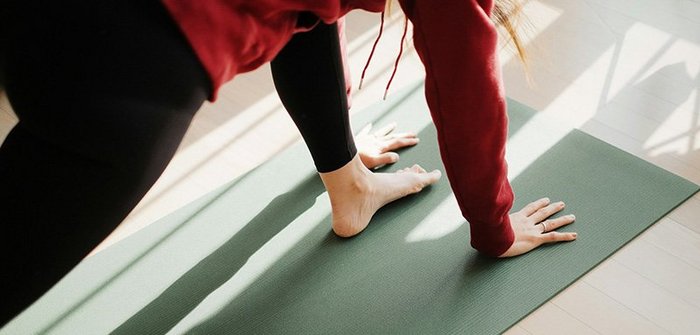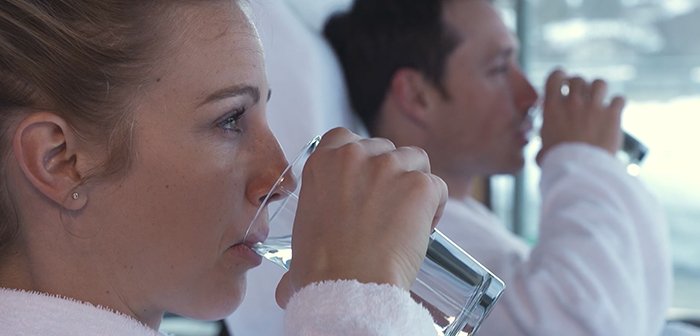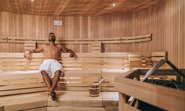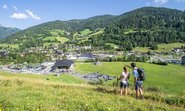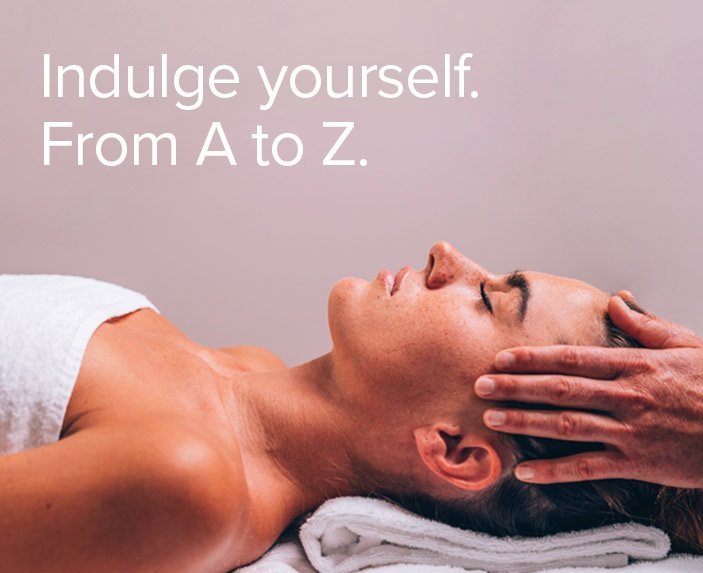You’re probably familiar with the feeling of burning thighs when skiing down the slope again after taking a long break? Skiing and snowboarding are not only fun sports, they work the leg and buttock muscles more than anything else. For experienced skiers, this one-sided muscular strain isn’t usually a problem, but beginners or those with less experience quickly notice sore muscles. In this blog post, we have summarised for you how muscle soreness develops, what you can do to prevent it and how to regenerate your muscles if affected. Let go of the tension and get reading. It’ll pay off!
Muscle soreness – the one aspect of skiing you’ll want to avoid.
“You can’t get away from sore muscles when doing sports. Your body should be able to feel that you’ve done your training!” – A sentiment we hear all the time, but it’s wrong. This is because muscle soreness occurs when the muscles are strained too much or incorrectly. This causes too much lactic acid to form and changes the pH value in the muscle until it starts to become acidic. The result is aching, stiff and weak muscles that make us clench our teeth every time we move. When cold temperatures and strenuous exercise meet muscle groups that haven’t been warmed up properly, muscle soreness is pretty much on the cards.
Tips for prevention.
It’s up to you whether you go home after an active day in the skiing area Bad Kleinkirchheim painfree and totally chilled or with sore muscles. The motto here is: warm up, warm up, warm up! So before you make your first moves on the slopes, you’ve got to get your body moving first. Mobilise the joints and muscle groups that are used the most when skiing. You can find the best tips for warming up on the slopes here.
Warming up increases the body temperature, breathing rate and pulse, which promotes blood flow to the muscles. This has two positive effects: firstly, oxygen and other nutrients, such as minerals or carbohydrates, are pumped much faster into the corresponding muscle areas. And secondly, the waste products produced during exercise are eliminated from the body more effectively. This prevents over-acidification of the muscles, which is that “burning” sensation you feel in your thighs.
To prevent your body from cooling down again quickly after a warm-up, make sure you wear suitable sportswear that can store body heat well. After all, when queuing at the lift or taking the chairlift, sometimes you spend a long time in the one position without moving.
Tips for regeneration.
Warmed up well but still have sore muscles? Then take it easy - our wellness experts from the Thermal Römerbad have summarised the six ultimate tips for alleviating stressed muscles for you here:
1. Relax in thermal water.
A warming bath in thermal water has a particularly soothing and relaxing effect after skiing. Just like the warm-up on the slopes, the thermal water also increases blood flow to the muscles, allowing more oxygen and nutrients to reach the areas of the body under stress. The minerals in the thermal water, such as magnesium and calcium, can help to relieve muscle cramps and support regeneration. The hydrostatic pressure of the water accelerates the healing process by improving lymph flow and promoting the elimination of metabolic waste from the muscles.
2. Gently heat up in the sauna.
For an even more intensive warming effect, we recommend a regenerative sauna session. But as with sport, it’s best not to overdo it! One or two sauna sessions of 15 minutes each at a maximum of 60 degrees are plenty good enough for effective regeneration. Anything more would only put unnecessary strain on the body. When gentling heating up in the sauna, the blood vessels dilate and blood and nutrients are delivered to the tissues. Soothing relaxation sets in.
3. Take alternating showers to feel invigorated.
While sore muscles are more likely to develop in the cold, alternating between hot and cold showers has a soothing and invigorating effect. The warm water relaxes muscles, tendons and ligaments and promotes blood circulation, while the cold water alternately anaesthetises nerve endings, reduces inflammation and swelling and revitalises the muscles. Try it out for yourself – feel how your circulation is stimulated and your entire metabolism is kick-started!
4. Try pain-relieving massages.
Muscles deserve to be stretched and you deserve a healing massage! Targeted action on the stressed muscle areas after doing sports can improve muscle flexibility, promote regeneration and prevent muscle soreness. Plus the endorphins released during the massage relieve pain and trigger a feeling of well-being. Lymphatic drainage is stimulated, which boosts the elimination of metabolic waste. Why not give our sports massage a try, for example? You can find out more in our blog article “Which massage is the right one?”.
5. Do stretching exercises for greater flexibility.
Stretching afterwards is just as important as warming up beforehand. Intensive skiing or snowboarding can cause certain muscle groups to shorten. Stretching exercises help to maintain mobility and flexibility and promote blood circulation. They also reduce the risk of injury, allowing you to prevent muscle strains.
6. Make sure you drink enough.
Winter sports enthusiasts should eat a healthy, nutritious diet and, most importantly, drink plenty of fluids – two litres a day is the recommended amount. Adequate fluid intake keeps the muscles hydrated and more resistant to stress. Drinking helps to eliminate toxins from the muscles more quickly, which can reduce inflammation and speed up muscle regeneration. And keep in mind that alcohol has the opposite effect since it dehydrates the body and inhibits muscle growth at night.
Despite doing everything you can to prevent soreness and regenerate muscles, sometimes muscle soreness just can’t be avoided. In that case, we recommend giving your body a rest and taking a short break from sport. At the end of the day, you can’t ski safely or enjoy yourself properly with aching muscles. And you’ll see that it gets better every time you ski.

